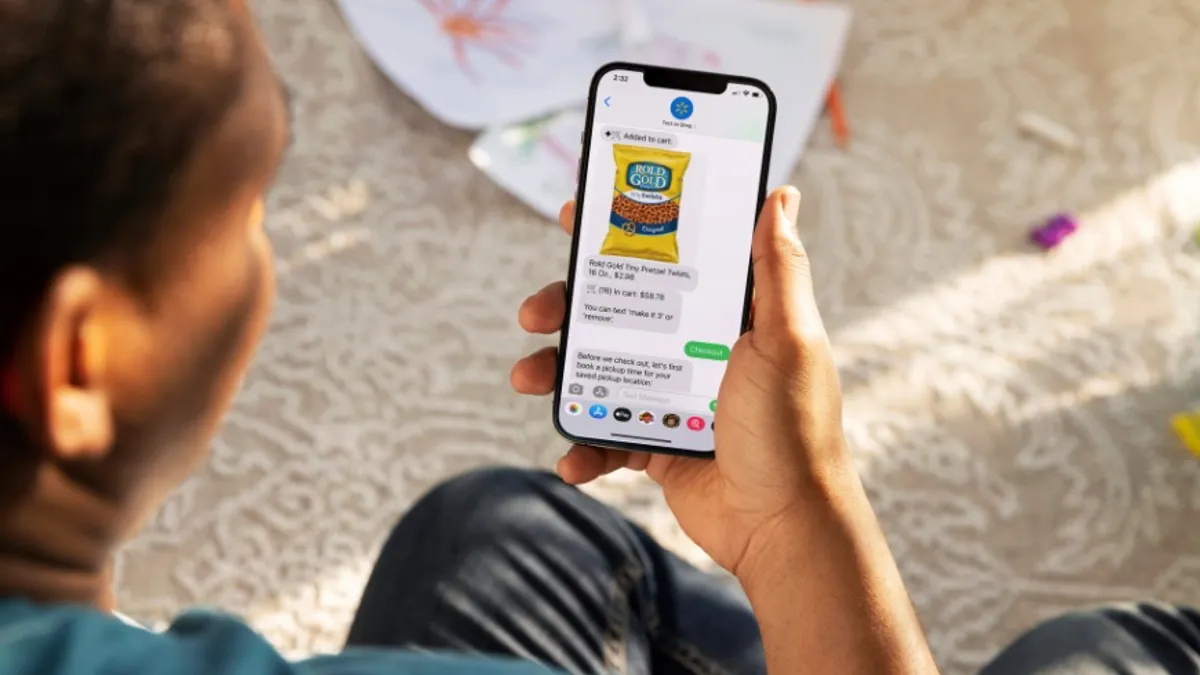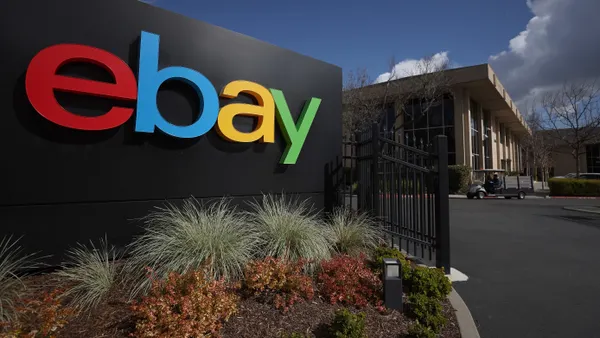Dive Brief:
- Adding another channel for consumers to purchase goods, Walmart's Global Tech and Store No. 8 teams have collaborated to test a text-to-shop tool in select areas, the company announced on Thursday.
- The retailer didn't say when it will release its Walmart Text to Shop feature to everyone, but Dominique Essig, vice president of conversational commerce at Store No. 8, noted in the announcement that it plans to make the tool "more widely available in the future."
- The announcement comes over a year and a half after the mass merchant discontinued Jet Black, a shop-by-text service geared toward urban customers that were out of reach of Walmart's stores.
Dive Insight:
This isn't the first time Walmart has waded into the text-to-shop waters. In 2018, Jet Black launched, targeting upper-income New Yorkers, who were out of reach of the mass merchant's big-box stores. Two years later, though, Walmart discontinued its service after undergoing a leadership change, replacing Jenny Fleiss of Rent the Runway with Nate Faust, senior vice president of supply chain and logistics with Walmart's e-commerce unit and co-founder of the Jet e-commerce site.
At the time it discontinued Jet Black, Walmart said it was part of an effort to move the service from "incubation" to part of the retailer's broader customer organization. A spokesperson at the time said, "we'll focus on how to leverage Walmart's infrastructure to make conversational commerce scalable."
Though Essig noted that "text shopping is just getting warmed up," Walmart has been experimenting with voice ordering for several years. In 2017, the company introduced its voice shopping feature, which allowed shoppers to buy items via Google Home and Google Home Mini devices. About two years later, the retail giant teamed up with Google to let shoppers order their groceries via Google Assistant-enabled devices like iPhones, Google Home and Android devices.
"We're learning a lot about when and how customers prefer a conversational experience, and we look forward to making this more widely available in the future," Essig wrote in the announcement. "By understanding our customers' preferences, we also solve the paradox of choice and save them time by serving up what we know they love best. Most importantly, we offer Walmart customers the opportunity to shop no matter where they are, and to communicate naturally by simply asking for what they want, any way they want."
Walmart isn't the only major retailer expanding its shopping capabilities through conversational channels. The Home Depot in 2017 introduced the Google Assistant voice shopping capability for shoppers on the Google Express website and app.
While previous research has indicated an uptick in conversational commerce channels, experts say the technology has a ways to go before it reaches mass adoption. In 2019, a report from PYMNTS.com indicated that less than a third of consumers owned voice-enabled devices, and 31% of those who owned the technology used it to make purchases. Among the reasons why consumers may be cautious about adopting the technology are cybersecurity and privacy concerns as well as the technology's inability to recognize diverse voices.












